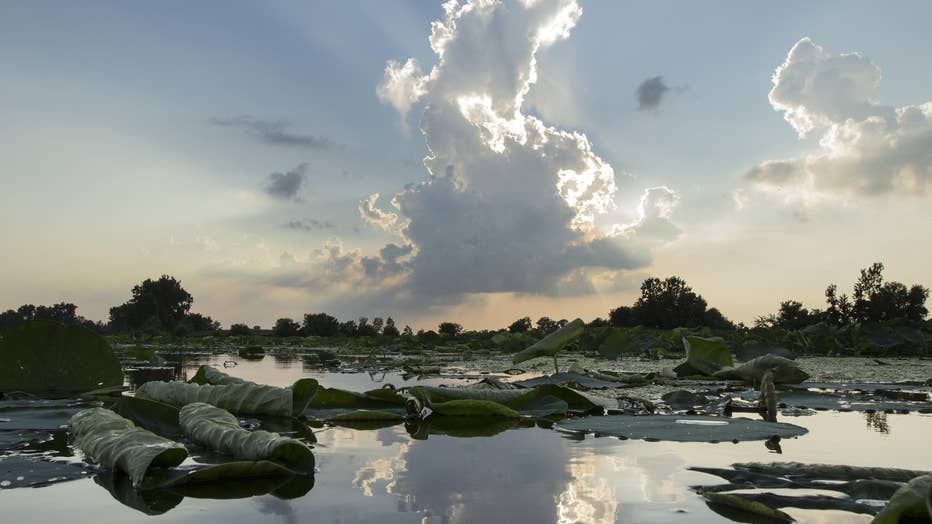Wetland restoration in Southeast Michigan reconnects habitat to Lake Erie

Lotus flowers at Erie Marsh Preserve. Photo courtesy of The Nature Conservancy.
ERIE, Mich. (FOX 2) - After 12 years and $7.5 million, the habitat restoration of a large wetland preserve in the very southeast corner of Michigan is now complete - and just in time for the migratory birds heading this way.
The Erie Marsh Preserve in Monroe County is now home to restored wetlands that include new levees, a new water management system, and nearly 10 miles of hiking trails.
The significance of the habitat cannot be understated as the preserve includes 11% of coastal wetlands in Southeast Michigan, which are valuable to the health of shorelines and land along the Great Lakes.
In addition to providing a place for fish and birds to live and thrive, it also reduces flooding while filtering out toxins in the water, improving its quality.

( ALL RIGHTS GRANTED TNC, CREDIT MANDATORY) Erie Marsh Preserve sunrise Photo credit: © Jason Whalen
The director of the Nature Conservancy of Michigan called the project and the end product a labor of love. "Erie Marsh is truly a place for people and nature to thrive, and we’re so excited to welcome birds and birders alike this spring," said Helen Taylor.
Erie Marsh is known for some of its rare bird species that show up periodically. While all of Southeast Michigan is a major migratory bird sector in North America, Erie Marsh is one of the first places species visit - especially in the spring.
They include Prairie Warblers, Glossy Ibis, Eastern Whip-poor-will, and red knots.
But that's not all. Erie Marsh is also one of the few places in Michigan to easily see pelicans. Some observations from the conservancy's leaders include dozens of different warbler species being visible in a single day, as well as black stilts.
MORE: Isle Royale wolf numbers stable, moose population declining
Located along the banks of North Maumee Bay near the Ohio border, bald eagles, purple martins, trumpeter swans and ospreys are some of the birds that reside in the trees along the preserve. Meanwhile, white bluegill and largemouth bass live in the waters below.
As part of the restoration, the Erie Marsh was reconnected to Lake Erie, allowing fish to reenter the body of water. That hasn't been the case for 60 years.


